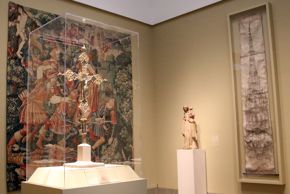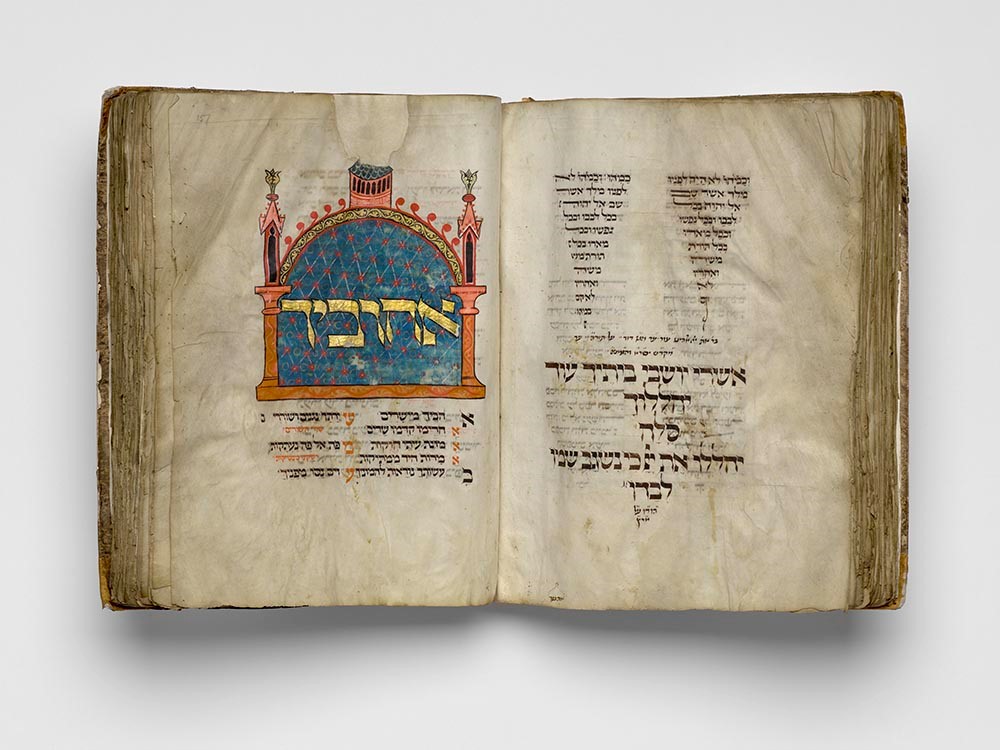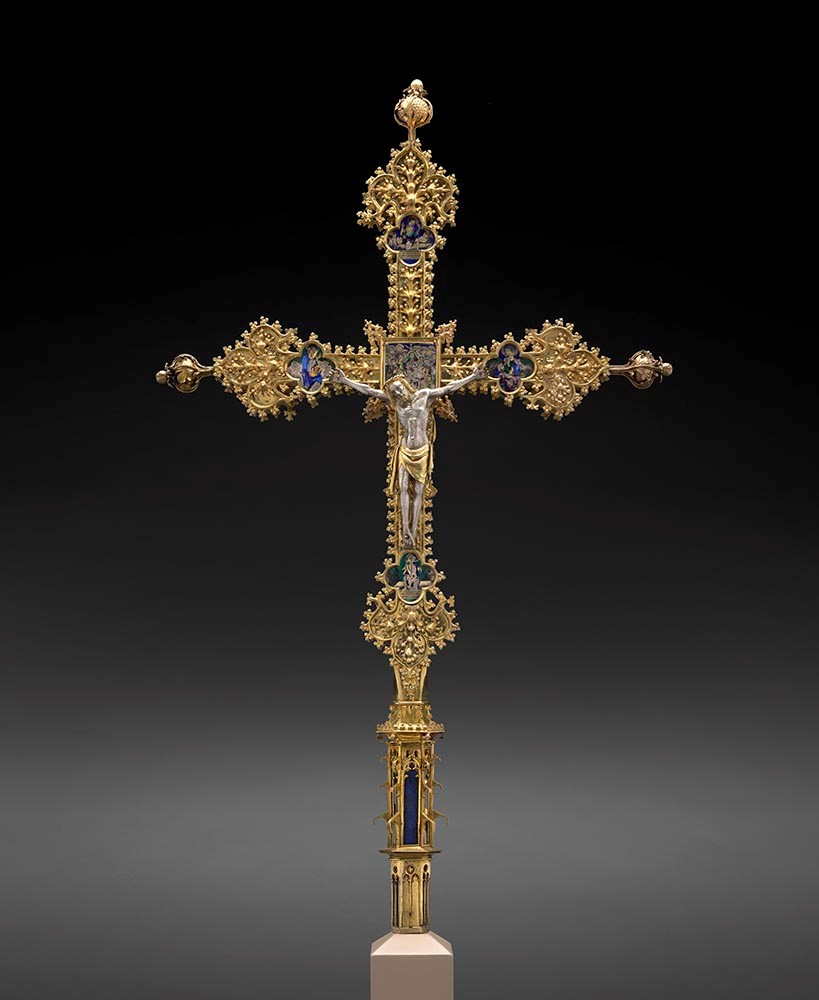Objects for Reflection: New Acquisitions of Medieval Art November 16, 2018

A gallery on the second floor of the Beck Building features new medieval-era acquisitions. Pictured are a 15th-century processional cross from Spain and a 1516 drawing of a tower of the Rouen Cathedral, displayed with a 15th-century Flemish tapestry depicting Hercules slaying King Laomedon and an early-14th-century French sculpture of the Virgin and Child.
This rare Hebrew illuminated manuscript from the German community of Mainz is called a mahzor, a festival prayer book used by Jews on occasions such as the High Holy Days of Rosh Hashanah (Jewish New Year) and Yom Kippur (Day of Atonement). The book, which dates to c. 1310–20, includes 299 leaves with writing in Ashkenazi script.
German, The Montefiore Mainz Mahzor (detail) c. 1310–20, illuminated manuscript on parchment; codex of 299 leaves, each ruled in ink, pricked, and written in black and red ink in Ashkenazi script, the Museum of Fine Arts, Houston, Museum purchase funded by the Brown Foundation Accessions Endowment Fund. Restoration supported with generous contributions from the TEFAF Museum Restoration fund; Joan Morgenstern; and Helaine and David Lane and Family.
Spanish, Processional Cross, c. 1400, silver-gilt, enamel, and wood, the Museum of Fine Arts, Houston, Museum purchase funded by the Brown Foundation Accessions Endowment Fund.
Attributed to Roulland le Roux and Pierre des Aubeaux, Design for the Rouen Cathedral Tower, 1516, pen and ink, gray wash, stylus and compass marks, with traces of metalpoint on parchment, the Museum of Fine Arts, Houston, Museum purchase funded by the Agnes Cullen Arnold Endowment Fund.
A detail of the pen-and-ink drawing Design for the Rouen Cathedral Tower
During the hustle and bustle of the holiday season, a display of recent acquisitions of medieval art offers you a moment to pause and reflect, surrounded by beautiful sacred objects.
Three in particular—a rare illuminated Hebrew manuscript, an intricate cross, and one of just a handful of surviving drawings of the Rouen Cathedral—are on view alongside other selections from the MFAH collections, enriching the Museum’s ability to tell the story of pre-modern art and culture.

German, The Montefiore Mainz Mahzor, c. 1310–20
One of the few Hebrew manuscripts of its kind still in existence, The Montefiore Mainz Mahzor is a festival prayer book that was used during the Jewish High Holidays of Rosh Hashanah and Yom Kippur. Medieval-era Jewish communities in trading towns along Germany’s Main and Rhine Rivers commissioned luxurious illustrated manuscripts such as this one, which would have been displayed publicly for the entire congregation to use. The worn pages, some long ago incised or cut away, attest to use by generations of worshippers.

Spanish, Processional Cross, c. 1400
An exquisite and rare surviving example of medieval Spanish goldsmithing, this imposing and intricately detailed cross is an exceptional expression of the High Gothic style that flourished around 1400 in Barcelona and the surrounding region. It is especially well-preserved, with delicate enamels that have retained their color over centuries. The crucified Christ figure is framed by depictions of the Virgin Mary, Saint John, and the resurrections of Christ and Adam or possibly Lazarus, with evangelists depicted in enamels on the reverse of the cross.

Attributed to Roulland le Roux, Design for the Rouen Cathedral Tower, 1516
At 11 feet high, this 1516 drawing of a tower of the Rouen Cathedral in France is monumental. Drafted under the creative direction of Roulland le Roux—the French architect who designed aspects of the Rouen Cathedral in the early 1500s—the drawing on parchment was likely the winning concept in a competition for the rebuilding of the cathedral’s transept tower, which later burned and was rebuilt in the 19th century. One of only a small number of such drawings in the world, this one is exceptional for its size, complexity, and state of preservation.
See these objects and other works of art on the second floor of the Beck Building.





